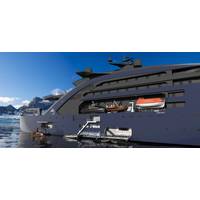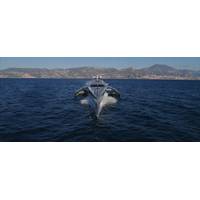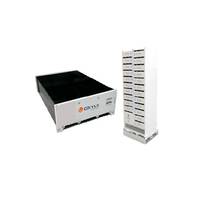Molten Salt Reactors: Maritime’s Nuclear Option

A race is being run by nuclear scientists and ship designers. The prize? “Decarbonization’s” holy grail — believed to be a “small” thorium-fueled, molten-salt rector’s unlimited power to propel sea trade. At the same time, a recently revived discussion among leading marine-nuclear thinkers revolves now around how to put an ultra-modern, as-yet non-existent marine reactor aboard a modern commercial vessel. As with nuclear power generally, shipborne reactors produce national discussion first, then discovery.
Sail Power: Liebherr Delivers World's Largest Slewing Drive Units

As the maritime industry grapples with the technology and technique to meet increasingly strict emission mandates, eConowind is working to deliver an innovative wind sail system.In step with the development, Liebherr delivered what is currently the largest worm-driven slewing drive units in the world for the sailing system by eConowind. Inspired by Jacques-Yves Cousteau, eConowind develops an innovative sailing system that is intended to revolutionize commercial shipping.
Battery-Power Moves Ahead in the Yacht Sector

Yachts de Luxe (YdL) of Singapore placed a 10-year, $5 million contract with OXIS Energy to build the world’s first ever luxury boat to be powered by Lithium Sulfur (Li-S) cell and battery systems technology with a design range between 70 and 100 nautical miles at cruising speed.OXIS will work with YdL to design the new 40 foot luxury day boat which will carry a 400 kWh battery system comprising of Ultra Light, High-Power cells and a BMS.
Wilhelmsen, NorSea Join Forces for Hydrogen
The Norwegean global maritime industry group Wilh. Wilhelmsen Holding ASA and Denmark-based supply chain manager NorSea join forces to develop liquid hydrogen supply chain for maritime applications in Norway.The environmentally friendly liquid hydrogen can be offered to commercial shipping in large scale supply within first quarter 2024, claimed the companies.Together with major industry players such as Equinor, Viking Cruises, Air Liquide…
Corvus Energy Wins MSA from DNV GL
Corvus Energy, a provider of energy storage solutions for marine, oil & gas and port applications, announced that DNV GL and Corvus Energy have completed the DNV GL Manufacturer Product Quality Assessment (MPQA) and have signed a Manufacturing Survey Arrangement (MSA), resulting in streamlined quality control processes and faster customer deliveries.Under the terms of the MSA, Corvus Energy has been granted the ability to witness the Factory Acceptance Testing (FAT) at its plant in Richmond…
ThyssenKrupp Develops New Lithium-Ion Batteries for Submarines
The providers of naval vessels, surface ships and submarines ThyssenKrupp Marine Systems of Germany has developed a new type of lithium-ion battery system for submarines together with Saft, a manufacturer of advanced battery systems for industry.In an adapted form, the system could also be used for other maritime applications in future.Dr. Rolf Wirtz, CEO of thyssenkrupp Marine Systems said: "The use of the new battery technology has enormous tactical advantages.
ACEL Selects Corvus Energy Orca ESS

ACEL AS of Norway has ordered an Orca Energy, Energy Storage System (ESS) from Corvus Energy to begin integration testing for uses across multiple maritime applications. Orca Energy is part of the next generation Orca ESS product line from Corvus which is specifically designed for maritime use. The ACEL Group consists of several companies with strong electrical expertise and professional resources in the field of offshore platform service vessels, including new builds, servicing and conversions.
LNG Mooring Lines Made with Dyneema
The introduction of new and larger vessels, Q-Flex and Q-Max, and new, often more exposed terminals becoming operational have changed mooring dynamics. The need to maintain workers’ safety at all times, whilst delivering maximum operational efficiency through lower costs and faster turnaround times remains unchanged. DSM Dyneema, a close partner to the LNG industry, has done a study which concludes that these industry trends are changing the performance demands for LNG mooring lines.